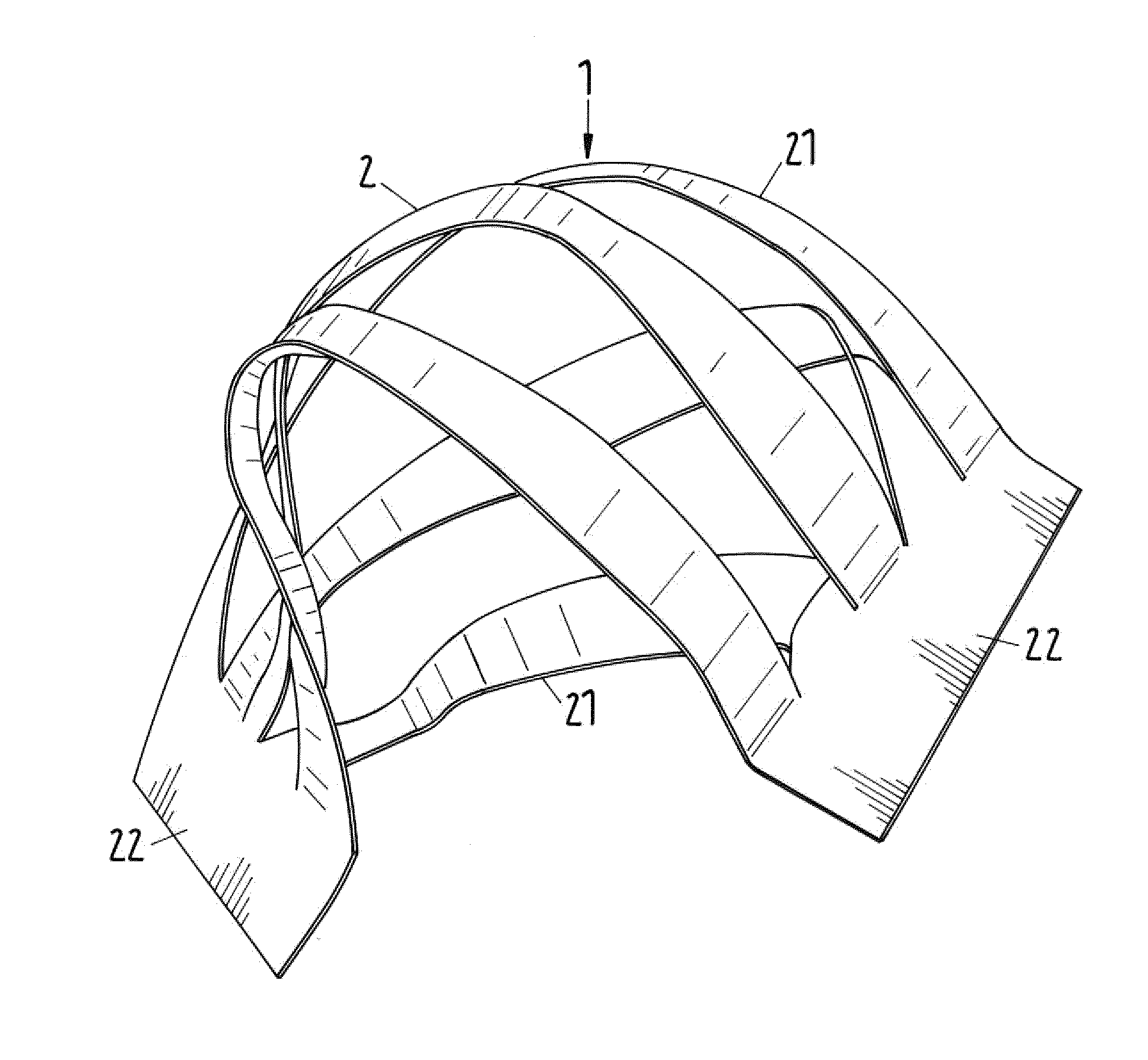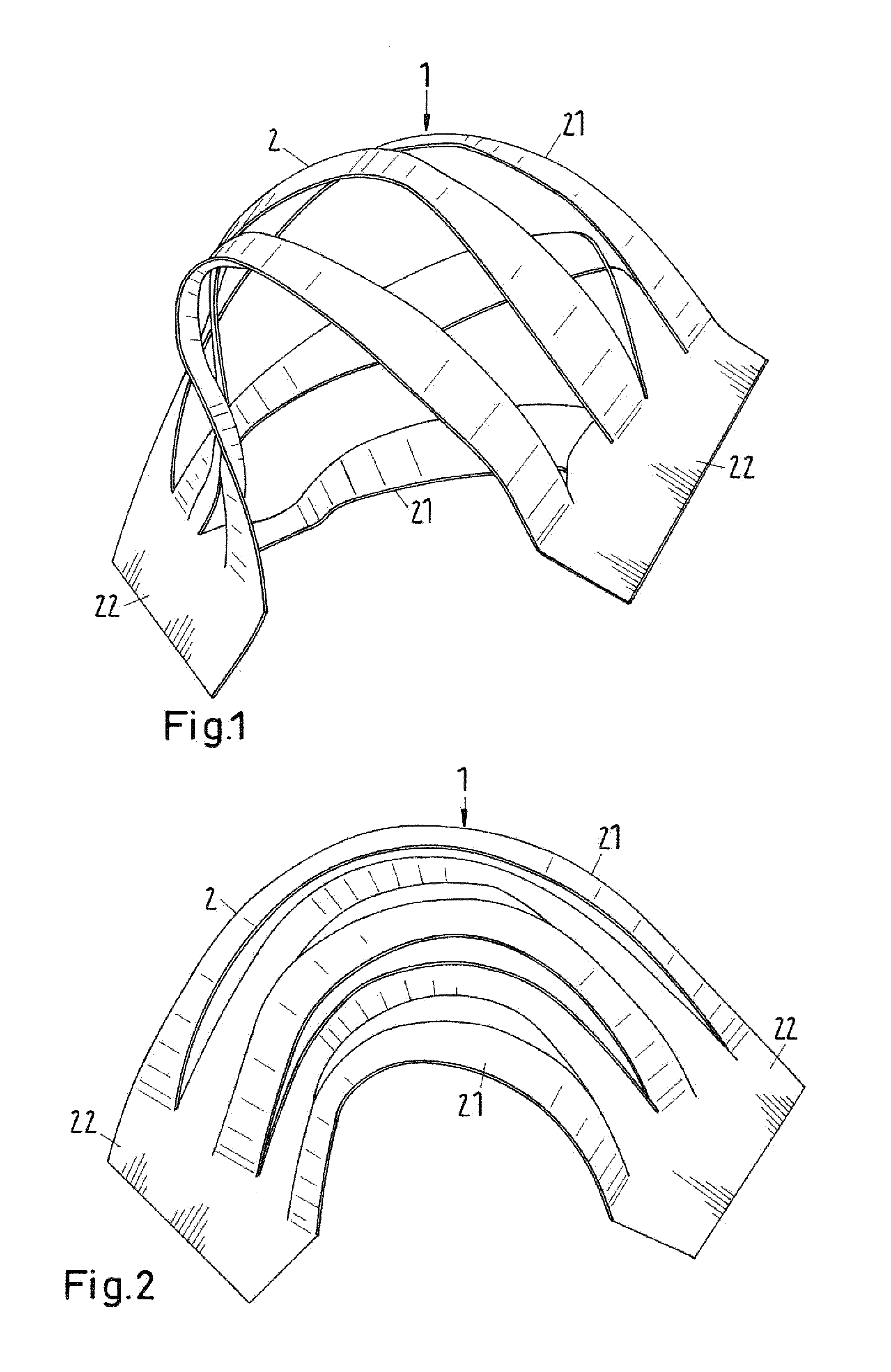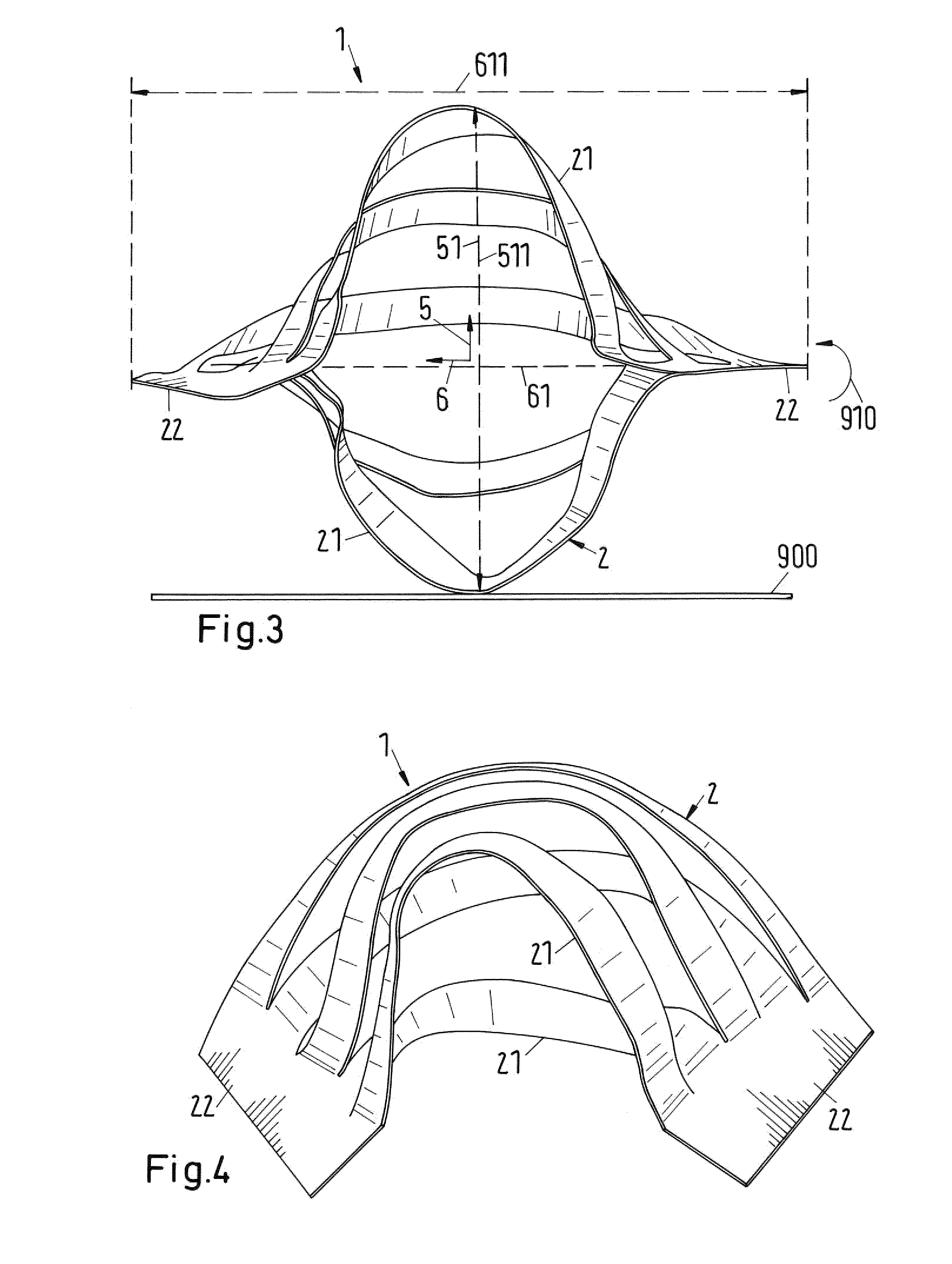Packing Element, Method to Produce it and a Column or Reactor Comprising Said Element
a technology of packing element and column, applied in the direction of physical/chemical process catalysts, separation processes, handling devices, etc., can solve the problems of viscous energy loss, pressure loss accompanying the flow of fluid, and disadvantageous increase of column pressure loss, etc., to achieve the effect of reducing the number of contact points, minimizing the number of protruding elements, and easy rotation or roll
- Summary
- Abstract
- Description
- Claims
- Application Information
AI Technical Summary
Benefits of technology
Problems solved by technology
Method used
Image
Examples
Embodiment Construction
[0050]FIG. 1 shows a schematic view of an embodiment of a packing element according to the invention, which as a whole is labeled with reference number 1. The packing element 1 is not specifically limited as to form, shape, construction or composition unless specifically indicated otherwise, as in the case of the indication of a substantially spherical or substantially ellipsoidal element 1. Any material that can be fabricated can be made into a packing element 1. For reasons of economy and mechanical strength and integrity, packing elements 1 are often made from made of metal, preferably stainless steel or aluminium sheet metal, more preferably of sheet metal made of thickness 3.0 to 0.08 mm, preferably 1.0 to 0.2 mm, or of ceramic, or of a plastic material, preferably a thermoplastic material, optionally a thermoplastic material filled with a filler or fibers, or any other material indicated for the specific application. In one embodiment, the packing element 1 is be made from pol...
PUM
| Property | Measurement | Unit |
|---|---|---|
| thickness | aaaaa | aaaaa |
| thickness | aaaaa | aaaaa |
| mass | aaaaa | aaaaa |
Abstract
Description
Claims
Application Information
 Login to View More
Login to View More - R&D
- Intellectual Property
- Life Sciences
- Materials
- Tech Scout
- Unparalleled Data Quality
- Higher Quality Content
- 60% Fewer Hallucinations
Browse by: Latest US Patents, China's latest patents, Technical Efficacy Thesaurus, Application Domain, Technology Topic, Popular Technical Reports.
© 2025 PatSnap. All rights reserved.Legal|Privacy policy|Modern Slavery Act Transparency Statement|Sitemap|About US| Contact US: help@patsnap.com



